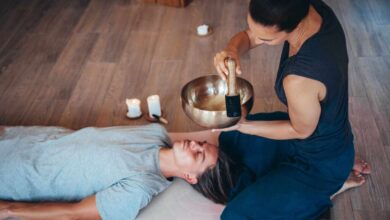Therapeutic Exercises to Use After Knee Surgery

Maintaining healthy joints may start in the physiotherapist’s clinic, but the real work is completed in the comfort of a patient’s home.
After a total or partial knee replacement surgery, patients will typically undergo a full physical therapy treatment plan focusing on regaining full range of motion (ROM) within the joint and increased muscle strengthening surrounding the affected limb to help prevent further injury.
However, patients must also continue a home exercise physio program long after surgery to maintain the progress of initial therapy and to lessen the risk of future problems.
Strengthening Exercises
Patients must initially focus on increasing the strength in both legs to prevent muscle atrophy commonly seen after surgery. According to Allina Hospitals and Clinics (AHC), exercises such as sitting in a chair and flexing the quadriceps muscle while lifting the lower leg can help promote increased muscle tone within the patient’s thigh. This activity can be completed at home with any chair and only a few times a day for short periods.
Depending on the patient’s ability, mini squats while holding on to a steady surface or railing can also be very beneficial as all three major muscle groups (quadriceps, hamstrings, and calves) and solid ROM are required to complete the movement. Weight-bearing adjustments can be made to any exercise with clearance from a physician or physical therapist.
Optional Knee Exercises
While many exercises can be found that can benefit the knee joint, patients should use proper judgment and the referral of a physician whenever attempting more advanced or complex movements. In addition, if a patient is experiencing high levels of pain or discomfort during any exercise, a similar activity with a lower difficulty level is usually available. For example, gluteal or hamstring sets are suitable alternatives to the more difficult strengthening movements.
Range-of-Motion Exercises
To maintain the natural movement of the knee joint and prevent joint “freezing,” patients will benefit from focusing on exercises that require flexion and extension at the knee capsule.
While lying down, the patient will slide the foot of the affected limb toward the buttocks until a mild stretch is felt. The patient will then slide the foot in the opposite direction to promote extension in the joint. Ankle weights or a resistance band can also be added to the exercise to help focus more on strengthening the quadriceps and hamstring muscle groups critical to proper knee function.
Quadriceps Sets
This exercise involves contracting the quadriceps muscle (the muscle in the front of the thigh) while the leg is straight. You can do this by tightening the muscle and holding for a few seconds, then relaxing.
Straight Leg Raises
Straight leg raises involve lifting the leg straight up while lying down, using the quadriceps muscle to control the movement. This exercise helps to improve the strength of the quadriceps and hip flexor muscles.
Hamstring Curls
This exercise involves bending the knee and bringing the heel towards the buttocks while lying down. This exercise helps to improve the strength of the hamstring muscles.
Remember, following your physiotherapist’s guidance and progress exercises gradually to avoid complications and promote healing is essential.



